The Best Approach Is Attending (2018)
Solo performance and installation, New Genre Arts Festival at Living Arts, Tulsa, OK

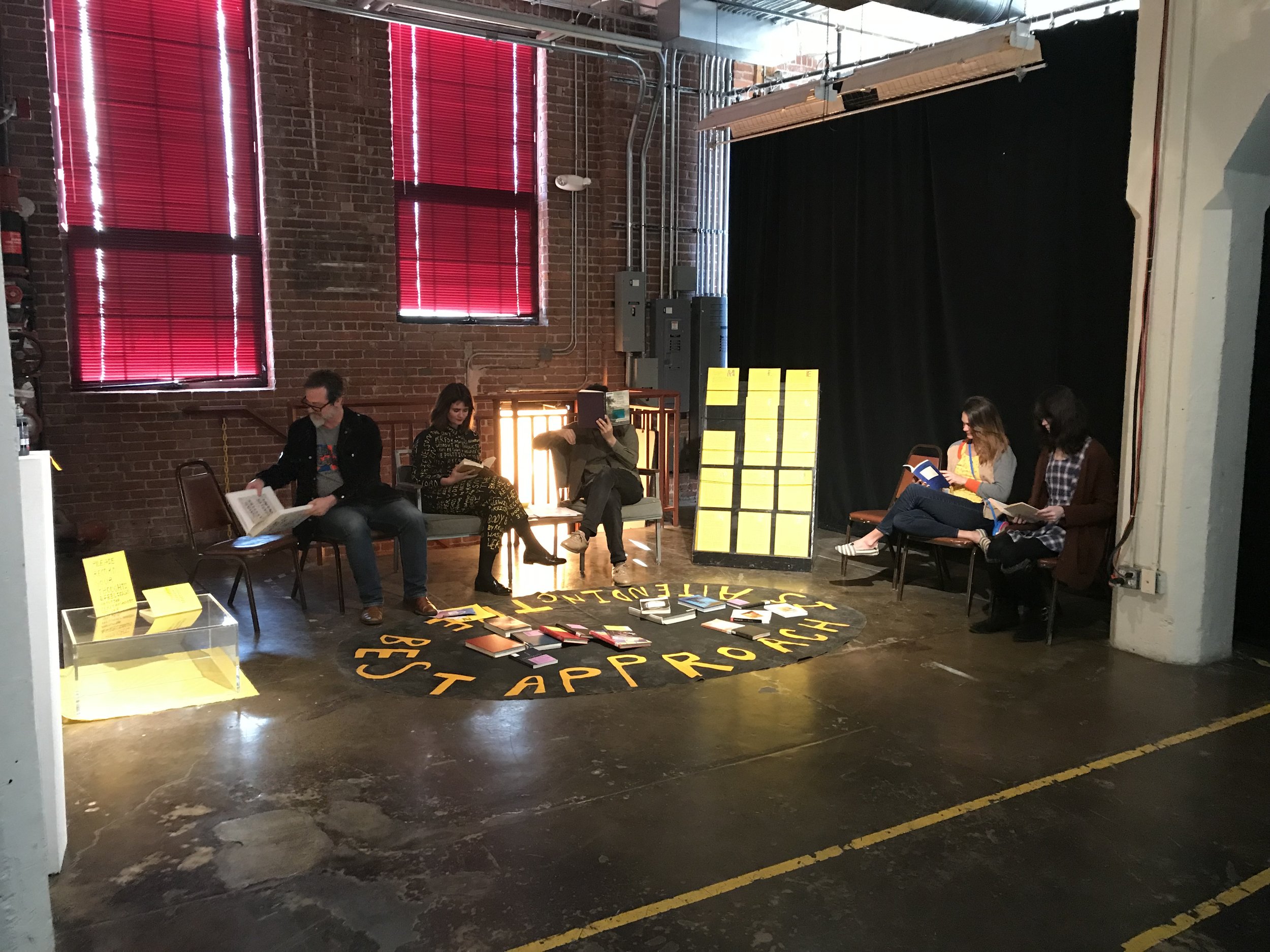
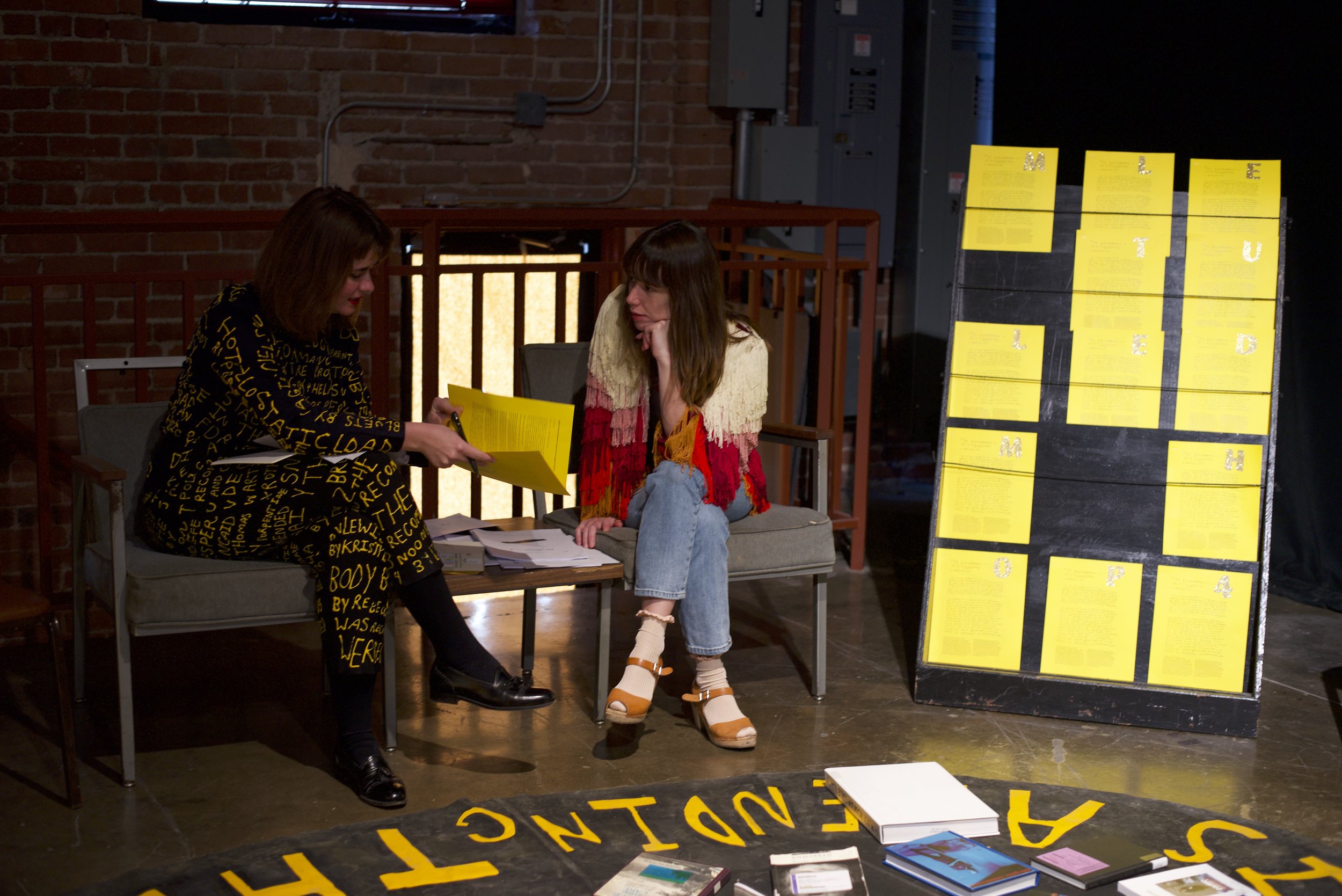

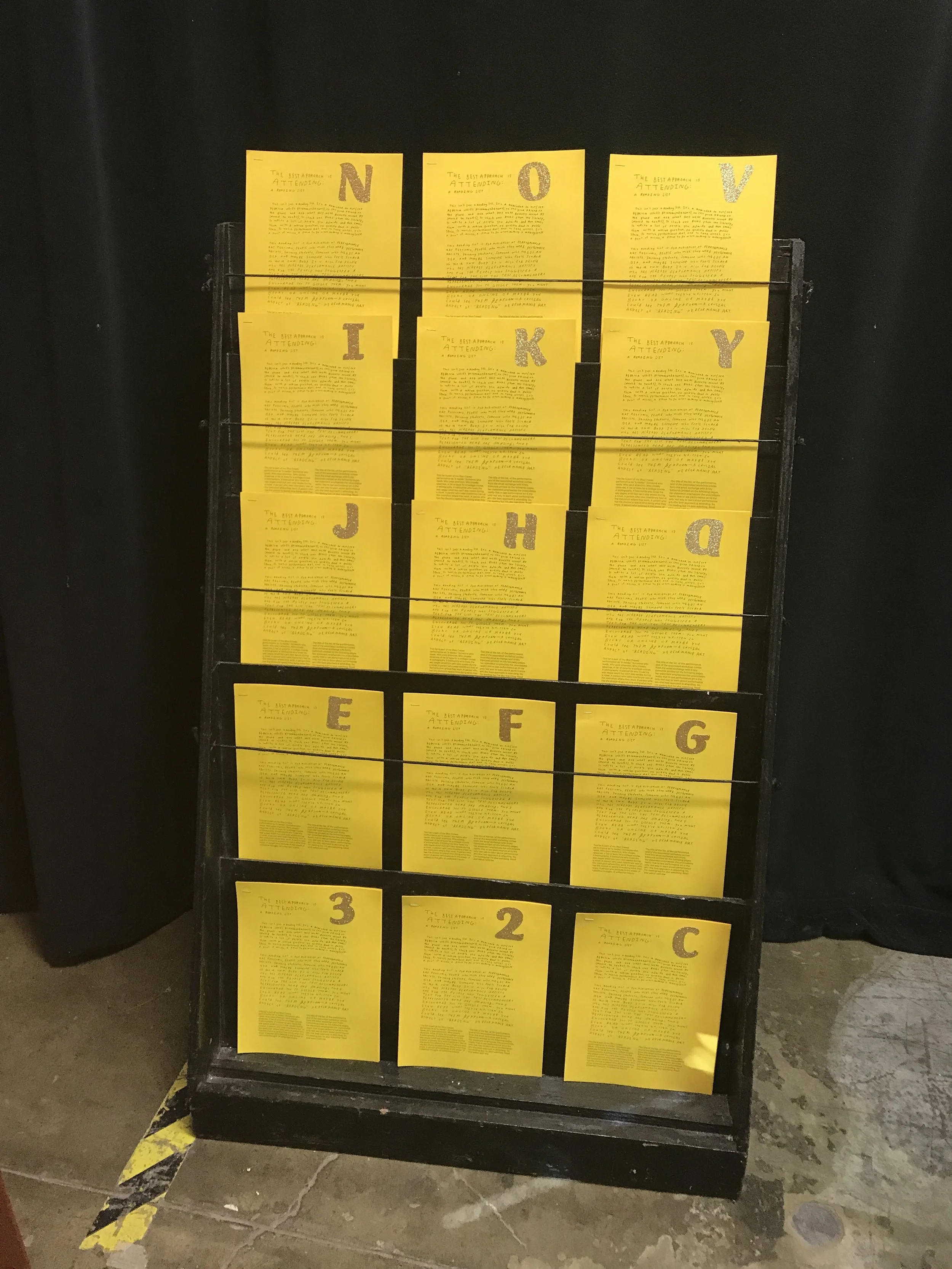
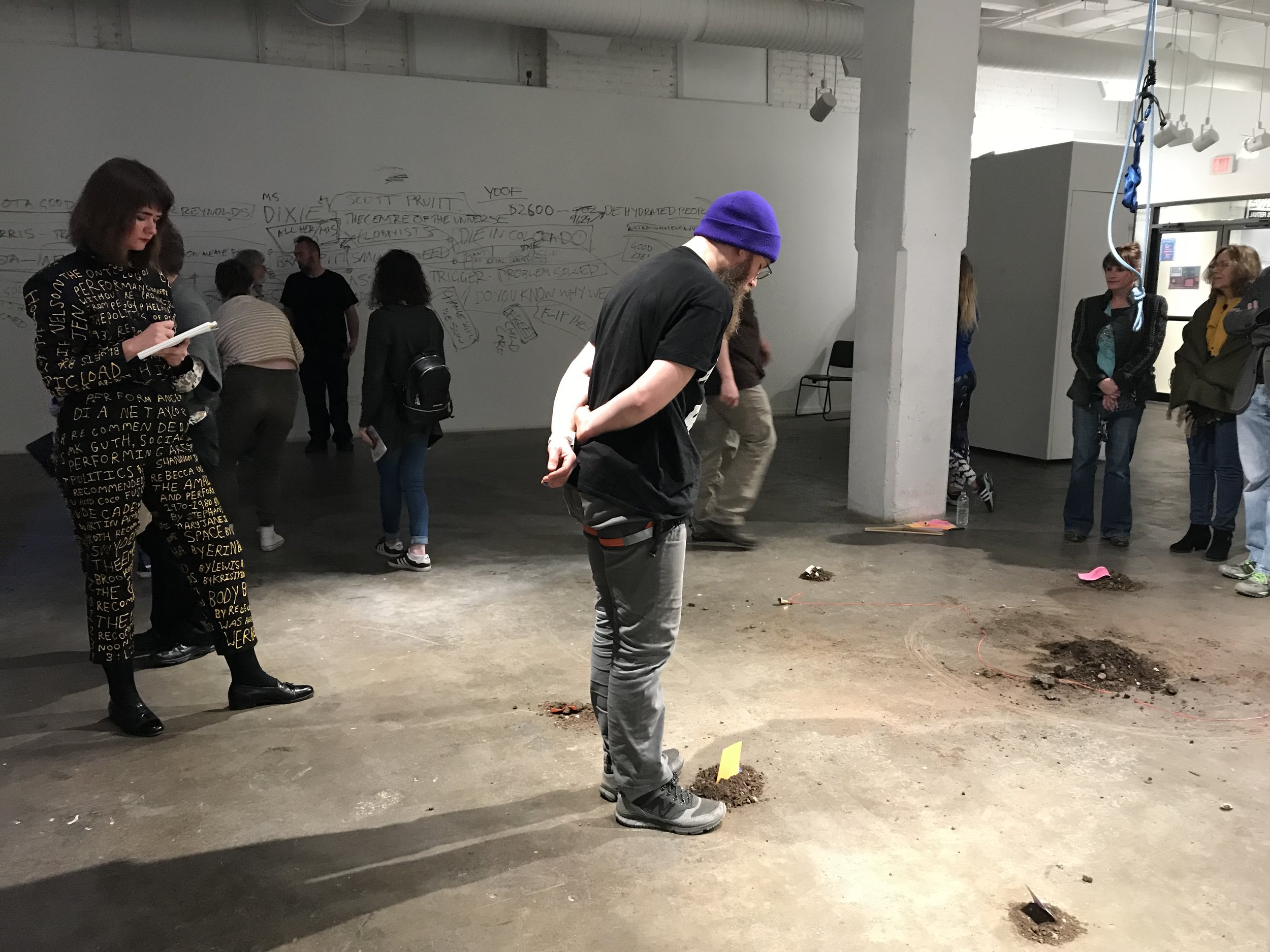
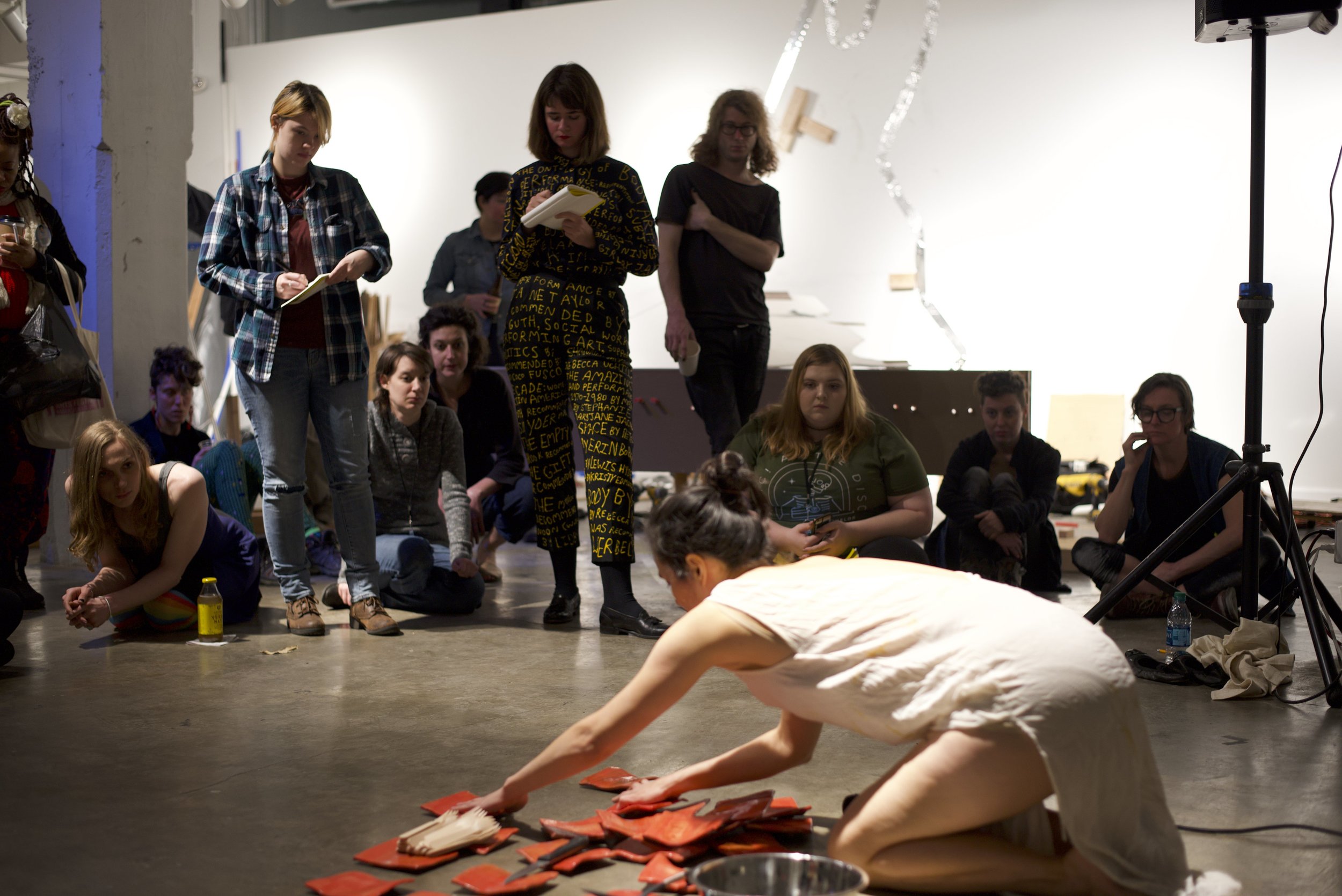
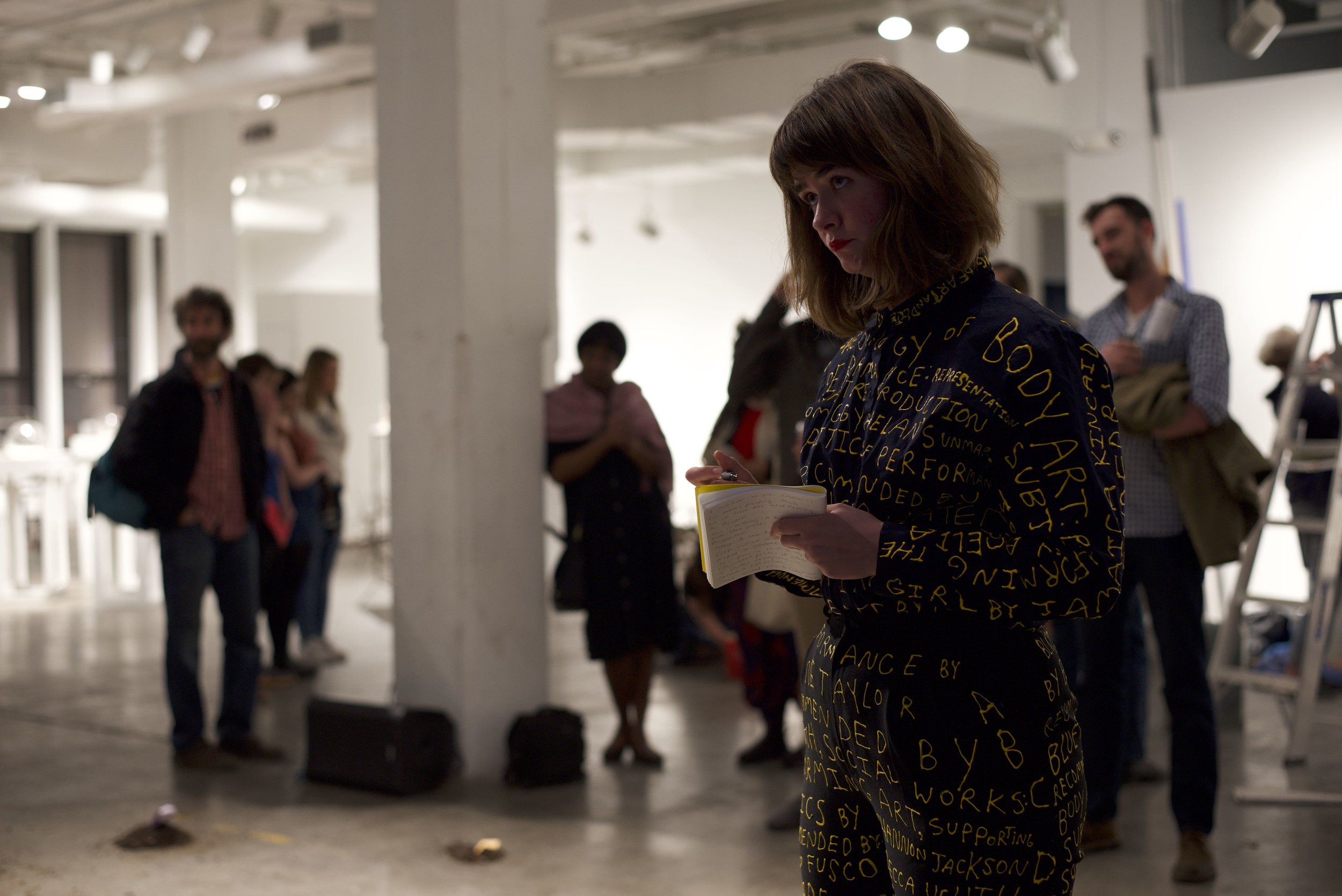
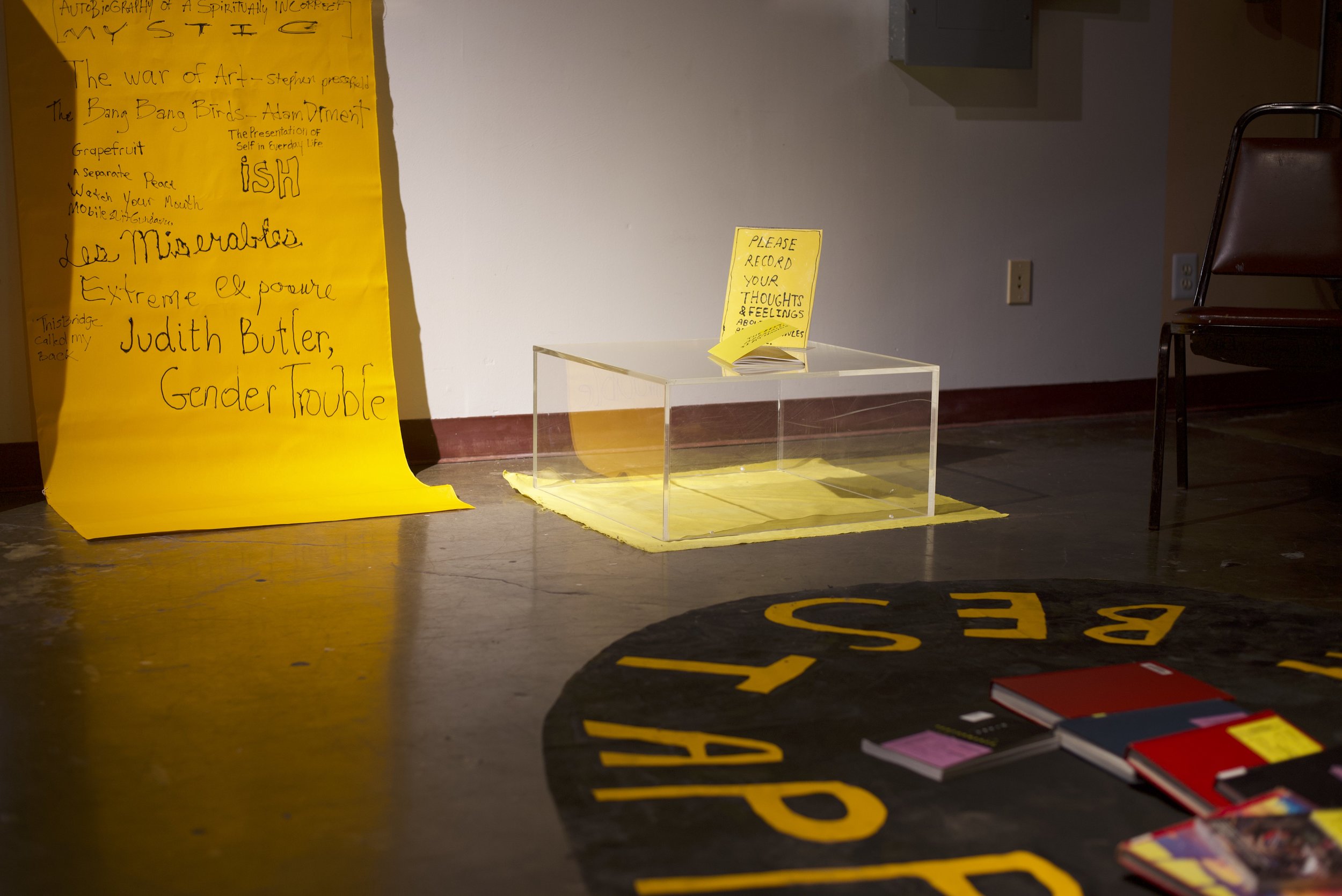
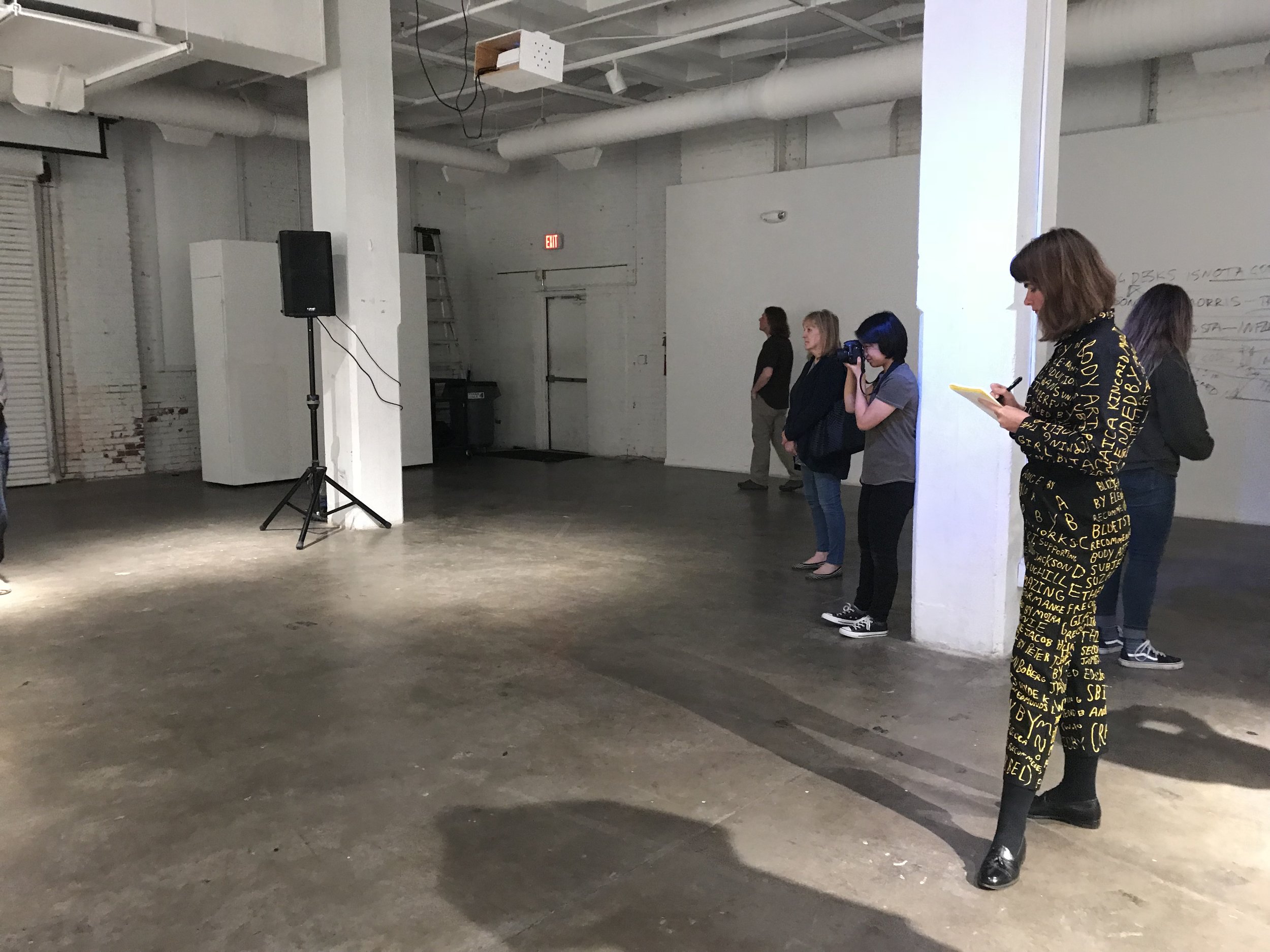
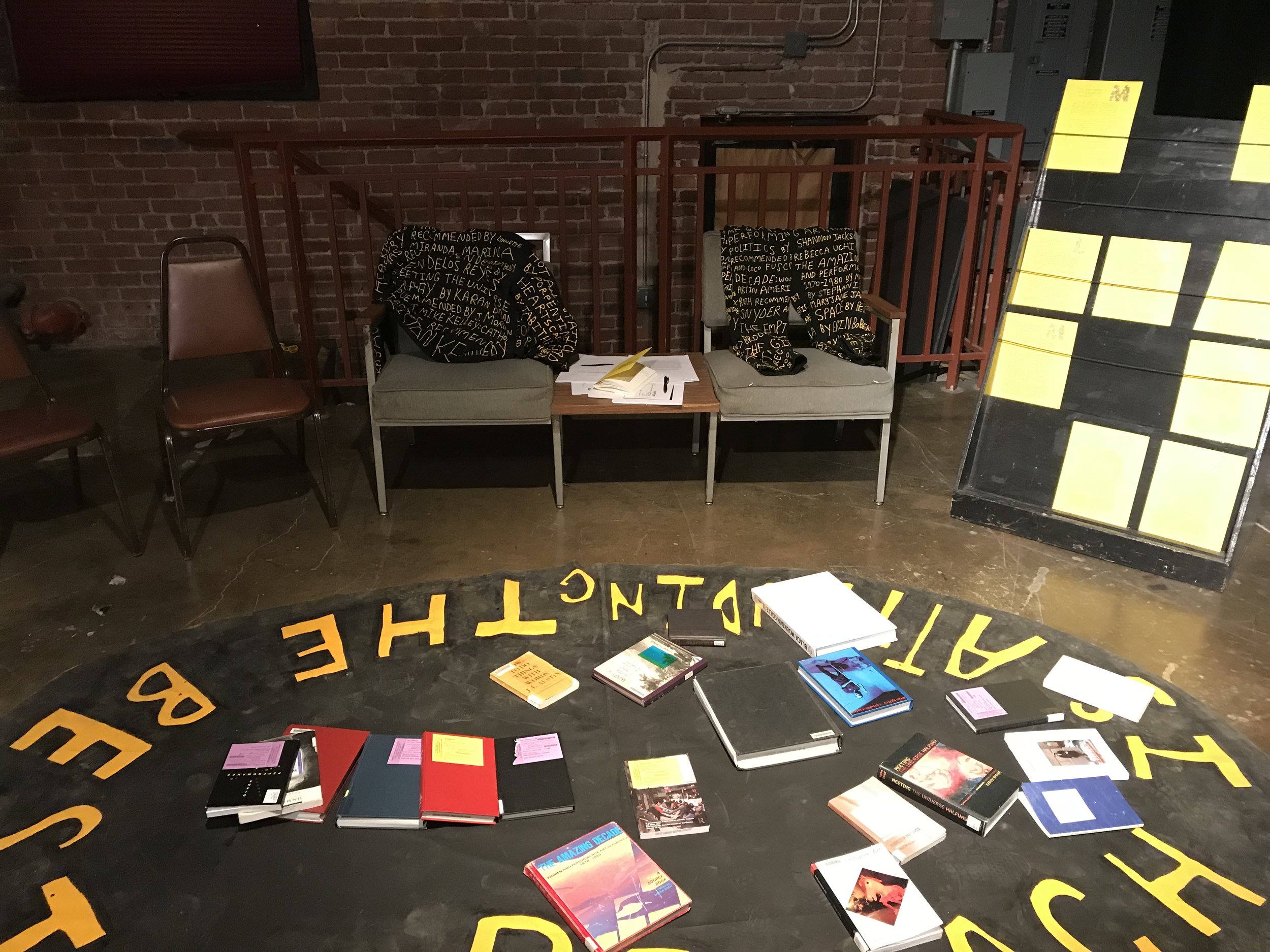
The Best Approach Is Attending was a performance commissioned by Living Arts in Tulsa, OK for the New Genre Arts Festival, curated by Jessica Borusky. As part of my performance, I created an installation or “Reading Room” using the education department’s furniture, a custom made rug, and a series of books suggested to me by performance artists, curators, and historians. The list of books went into a “bibliography” along with comments from each contributor, and I gave those out for free during the festival.
The installation was situated within the festival for three days, and I performed during all open hours. The books were borrowed through Interlibrary loan at the University of Massachusetts Dartmouth where I was working at the time. As part of my performance, I took notes on all the other performances in the festival, talked to audience members about their experiences, and encouraged the audience to keep their own notes in a series of yellow notebooks available in the reading room.
Below is a transcript of the artist talk I gave during the festival:
Usually I never read a talk, I find it boring to listen to and boring to read, but for you today, since the work I’m presenting here is about re-framing the everyday act of reading as a critical tool for engaging with contemporary performance art, I thought I would try reading as performance.
A few weeks ago, a friend who is an art historian that specializes in ephemeral art practices spent the night at my apartment on campus at the University of Massachusetts where I work as the artist in residence. I made dinner for the two of us after a day of teaching and meetings, and we talked for a long time afterwards about the relevance of a performance art education. She really believes in the power of critical theory and history as something that can inform an artist’s contemporary work, and I do, too—but I’ve always been more interested in having an experience than reading a book.
In first grade, I refused to read unless I was reading the Boxcar Kids inside a cardboard box decorated like a train car. I also made puppets of all the characters in the book so I could make a show each time I read a chapter. As a first generation student, I studied anthropology in college at a place that really embraces experiential education, and a few years later, I attended a graduate program based in radical, liberatory education traditions that encourage practice over theory.
As our conversation unfolded that night, I entertained the idea of getting a PHD—my friend, a PHD holder herself, immediately responded, “Roz, you are not the kind of person who gets a PHD.” I wasn’t totally sure what she meant, but outwardly, I became defensive. Inwardly, I thought, “That’s true, I’m really not interested in doing research based in reading and writing, but I find such joy in engaging deeply with topics, people, places, and ideas associated with art.”
This is to say that my performance here as part of the festival is an experiment in education—an attempt at shifting what formal performance art education is and how it is perceived by audiences and artists alike. I’m performing as someone who reads books, but I’m also participating in and viewing my colleagues’ work, writing about it, reflecting out-loud, and talking to the audience about the work as it’s happening—all as a form of reading.
I want to clarify that I do actually read words as an adult—I read the news, books about art, novels, essays, science reports, memoirs, and articles almost everyday. I find the practice of reading and spending time reflecting on how other people view and experience the world to be one of my greatest tools as an artist. It’s something that expands my perspective and challenges my approach.
I want to leave you with a quote from one of the curators who contributed to the reading list I created for this project. Her name is Kristy Edmunds and she curates performance at UCLA. She wrote this in response to a statement I made about reading as a tool to learn about performance art:
The problem with Performance Art in written book form, is that it is usually written about from a very lofty theoretical point of view, and is therefore not exactly about what the artist was intending but what the theorist was overlaying/de-constructing, and well, theorizing about. If you want to “read” about performance art, or performing arts for that matter (which have major distinctions), the best approach is attending it. Literacy in performance is best derived by watching it and is accrued through repeated exposure. In fact, the predominant potency of the work is that it is live (or, if not potent–which can easily be the case – then at least it is of importance to the conceptual framing). Why else would someone put their body into public space and request attendance, than for the reason of an exchange in live, real time? The live encounter is an immensely significant aspect.